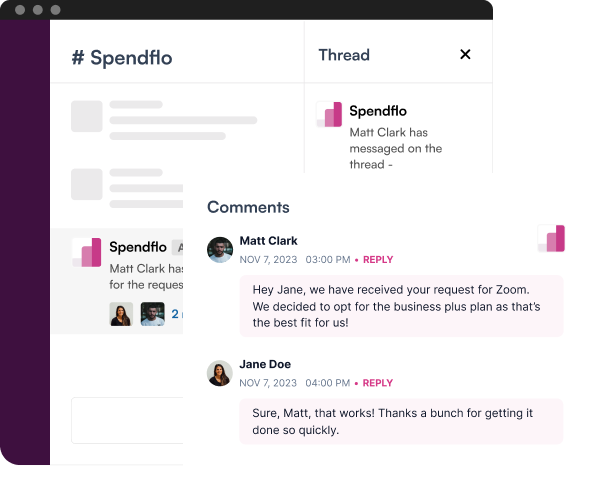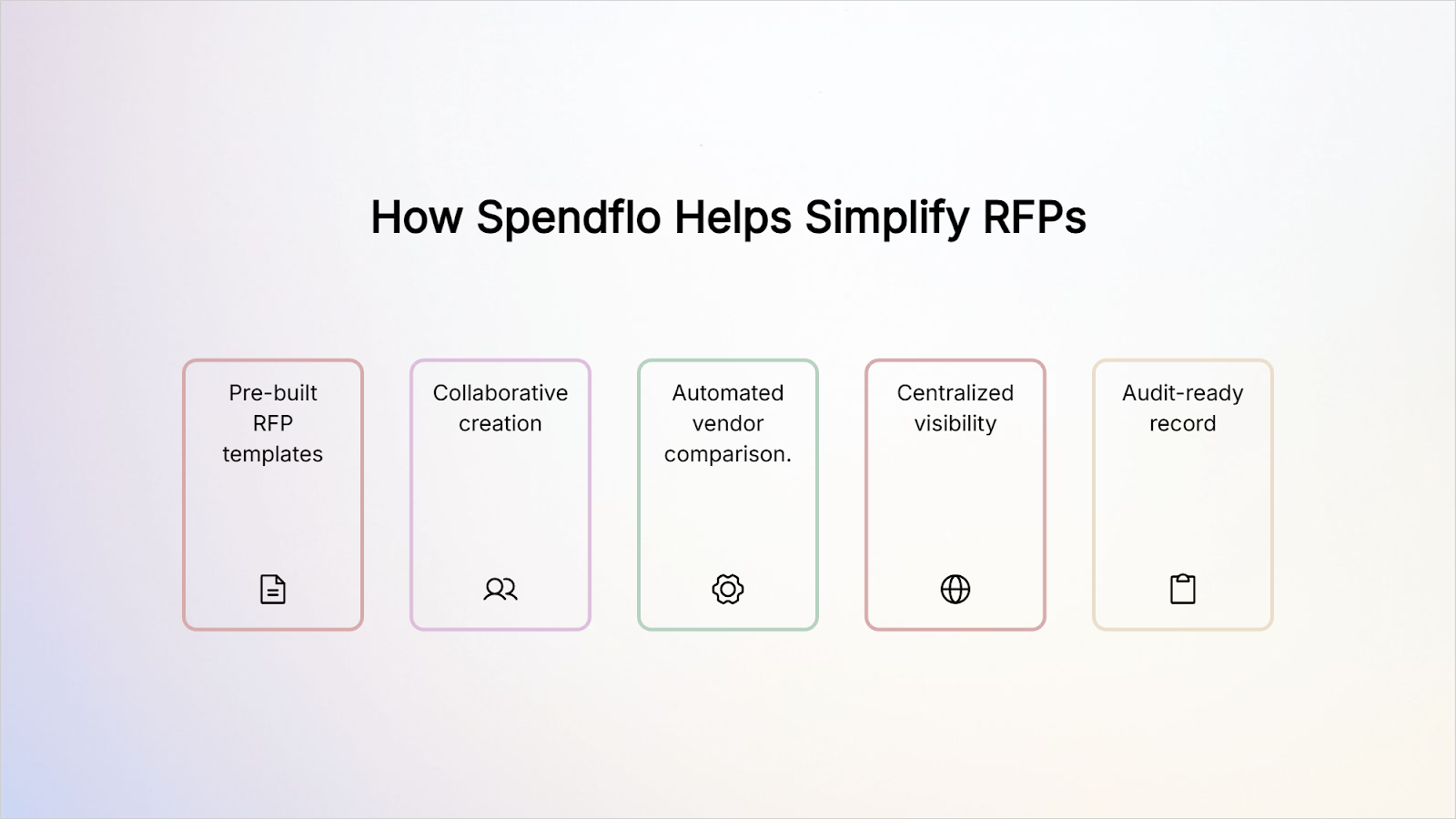

Free RFP Templates: Professional Proposals in Minutes

Free RFP Templates: Professional Proposals in Minutes
Learn how free RFP templates help you create clear, professional proposals quickly. Avoid common mistakes, save time, and streamline vendor selection.


A recent survey of more than 1,500 response teams in the U.S. found that the average win rate for RFP responses is just 45 percent. That means more than half of proposals fall short, often not because the provider is unqualified, but because the process of responding is disjointed, repetitive, or unclear. Many organizations find themselves rewriting the same proposal sections over and over, while service providers struggle to interpret expectations or deliver information in the exact format requested.
This is where structure makes a meaningful difference. Starting with a clear, ready-to-use proposal template in Microsoft Word, Google Docs, or Adobe PDF can provide consistency and direction from the very beginning. It also reduces the time and stress involved in crafting each response from scratch. When paired with project planning or workflow tools to track vendor communication, key milestones, and internal collaboration, the RFP process becomes significantly more organized and predictable.The goal is not just to send out more RFPs, but to create a process where both your team and your vendors can respond quickly, clearly, and confidently.
What Is an RFP and Why It Matters
A Request for Proposal (RFP) invites vendors to submit bids by defining objectives, scope of work, and evaluation criteria for fair comparison. A well-structured RFP promotes regulatory compliance, transparency, and accurate cost control while helping businesses choose the right IT Services, construction projects, or marketing services partner.
Using Request for Proposal Templates in MS Word or MS Excel makes it easy to standardize the proposal submission process, maintain alignment with company name branding, and include technical requirements like security questionnaires, SOC 2, ISO 27001, Firewall solutions, and Disaster Recovery plans.
RFP vs. RFI vs. RFQ: Quick Breakdown
All of these three terms are alike in sound, yet they are very different in the purposes they are used in the procurement process. Knowing when to apply each one of them assists teams in communicating effectively with vendors and saving time by not gathering the wrong form of information.
In simple terms, an RFI helps you explore, an RFQ helps you price, and an RFP helps you decide. Together, they form a structured process that leads to smarter vendor choices and stronger procurement outcomes.
Free RFP Template: Make a Copy: https://docs.google.com/document/d/1wzp59pzZg4LcOFKwQ3ICMJRi5EM40E0hU3j2VePEYh4/edit?tab=t.0
Core Sections Every RFP Should Include
An effective RFP gives vendors a clear direction and enables your internal proposal manager to receive structured responses. Although proposal templates and legal templates vary across industries like Software Development, Web Design and Development, or HVAC installation, any good RFP should contain the following essential components:
1. Company Background
Start with selling the vendors an idea of who you are and what your business is. This background will assist them in knowing what is important to you and putting their proposal in line with your needs. inclusive such as the size of company, market focus etc. and challenges that RFP wants to address.
2. Project Overview
Write a summary of the aim of the RFP and what you want to accomplish. Explain the issue or need and success vividly. This section must present project objectives, project timelines, and any quantifiable deliverables that may be anticipated as a result of the engagement.
3. Scope of Work
Know precisely what you want from vendors. Identify tasks, deliverables and technical or functional requirements. This thoroughness will reduce the confusion and make sure that all proposals are in line with what you want initially.
4. Evaluation Criteria
describe how your group is going to evaluate proposals. Vendors are expected to be aware of which are the most important factors e.g. price, quality, experience, compliance, or scalability. The establishment of clear scoring criteria makes comparisons objective and transparent.
5. Submission Guidelines
Give a clear guideline on how and at what time the vendors should make proposals. Indicate needed forms, supporting documentation and contact information regarding questions. Regular submission policies save time in the assessment process and avoid mistakes.
6. Terms and Conditions
Provide the legal and business structure of participation. Incorporate terms of payment, confidentiality, fines and renewals. This allows the vendors to evaluate their fit at the onset of the process and avoid contentions in later stages.
A well-developed RFP framework spares time, lessens confusion, and motivates vendors to make more thorough and competitive offers resulting in enhanced sourcing choices and quicker results.
Free RFP Template: Make a Copy: https://docs.google.com/document/d/1wzp59pzZg4LcOFKwQ3ICMJRi5EM40E0hU3j2VePEYh4/edit?tab=t.0

Common RFP Writing Mistakes to Avoid
Even the most knowledgeable procurement teams commit minor mistakes that may slug the RFP process or result in poor vendor selection. By avoiding such pitfalls you are bound to receive the correct, similar, and good suppliers in terms of quality.
1. Being overly enigmatic regarding requirements.
Lack of specificity of project goals or deliverables leads to vendors making guesses on what you exactly require. It results in poor consistency of the proposals and scope gaps in the future. Always establish what you want, time limits and measurement of success in such a way that the vendors will provide the appropriate response.
2. Focusing only on price
Selecting the low-cost alternative might seem to be economical in the short-term but may lead to quality, service or scaling issues. Assess suppliers and not cost alone. A lower quote may be overshadowed by long-term fit, reliability and performance.
3. Disregard of evaluation standards.
Lack of a definite scoring system makes it a subjective and inconsistent decision-making process. Establish performance standards that will emphasize price, capability, experience and compliance. This provides your team with a logical means of comparing proposals.
4. Omitting internal alignment.
The lack of priorities between procurement, finance, and IT teams tends to paralyze RFPs. Do not send out the RFP before receiving the agreement of all departments about what is required and about evaluation factors. The internal alignment can accelerate the reviews, as well as prevent contradictory feedback.
5. Creating impractical deadlines.
Limited timeframes can lead to quality vendors not wanting to participate or provide rushed and incomplete responses. Provide suppliers with ample time to make detailed and thoughtful proposals. When you have a sensible timetable, you can better the work submitted and get your team to make better choices.
6. Making the format too complex.
Unnecessary parts or overcomplicated forms in the RFP may frustrate the vendors. It should be organized though not too complicated but only emphasizing the information that makes a difference to your decision. With an easily defined plan, the participation is enhanced and time is saved by all.
These are some of the pitfalls you should avoid to ensure a smooth RFP process and hire vendors who know what you want and can provide real business value.

How Spendflo Helps Simplify RFPs

Spendflo allows teams to eliminate the use of spreadsheets, disorganized files, and interminable email threads by integrating the entire RFP process in a single automation tool. It provides procurement, finance and IT departments with one platform where they can develop, work and monitor each proposal until completion.
1. Pre-built RFP templates
Spendflo offers templates that are ready to use in SaaS, procurement, and IT projects. These templates are best practices and have all the necessary sections to make up a complete RFP. They can be customized easily by teams, allowing them to save hours normally used in formatting and editing.
2. Collaborative creation
The same RFP can be worked on by multiple stakeholders in real time. The procurement management, financial, and security teams are able to edit, review and approve content without altering tools. This teamwork minimizes misunderstanding and keeps everyone on track prior to submission of RFP.
3. Automated vendor comparison.
Comparison of vendor proposals is slow and prone to errors. The automated comparison option in Spendflo presents all proposals on a side by side basis, with weighted scoring based on the cost, capability, and compliance. This assists teams in making a quicker and more data-oriented decision.
4. Centralized visibility
All the RFPs, vendor responses and all the deadlines are tracked in a single dashboard. It allows teams to see what has been accomplished and access real-time information on submissions. This visibility minimizes follow-ups and assists in preventing delays or forgotten vendors.
5. Audit-ready record
Spendflo is an automatic system that captures all the submissions, comments and amendments in the RFP cycle. This forms a complete audit trail that eases reporting and compliance reviews. It also simplifies the process of revisiting previous RFPs to be used in the future as benchmarks or renewals.
Using Spendflo, RFPs can be created in all their professional forms within minutes. The platform substitutes manual labor with systematic automation, providing procurement leaders with control, transparency, and assurance of each vendor decision.
Creating an RFP is not supposed to be a slow and manual process full of formatting and follow-ups. However, it can take days before many teams can send out one, gathering information and coordinating multi-departmentally.
A developing SaaS firm which was a client of Spendflo saved nearly 50 percent in turnaround time using our automated RFP templates. They eliminated version errors, enhanced accuracy, and obtained better vendor terms by keeping all the stakeholders in the same location.
You should modernize your procurement process in case your team is still preparing RFP manually. Book a demo with Spendflo and learn how to make decisions and build better vendor relationships through structured, automated RFPs.

Frequently Asked Questions
1. What’s included in Spendflo’s free RFP templates?
Ready-made project scope section, vendor requirements section, pricing section, evaluation criteria section, and submission guidelines.
2. Can I edit the templates?
Yes. They are entirely customizable and integrate with Word, Google Docs and Sheets.
3. How do these templates save time?
They do away with formatting tasks, make sure that all essential details have been captured and make responses more comparable.
4. Who should use these RFP templates?
Procurement, finance, IT, and operations departments that are managing vendor reviews or renewals.
5. How does Spendflo improve the RFP process overall?
It automatically generates RFPs, uniforms comparisons, and provides real-time access to vendor responses.










.png)




.png)




%20Questions%20to%20Ask%20Vendors.webp)
%20Systems%20A%20Comprehensive%20Guide.webp)




.avif)





